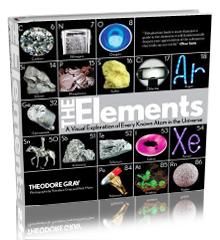Lead type. | |||
| Sample Image | Spin Video | QuickTimeVR Rotation | |||
| Lead type. David Eisenman and Doyle Moore work together on various book projects, and David kindly procured for me some of Doyle's old lead type. Hard to imagine this is how just about everything used to be printed, by stacking up rows and rows of little block of lead, one letter at a time. A "typesetter" used to be a person, not a machine. Lead type is made from an alloy that contains about 15-17% antimony and a few percent of tin, sometimes a bit of copper. The main function of the antimony is to make the allow remain exactly the same size when it freezes. Most substances including most metals shrink slightly when they solidify, but antimony expands, and when just the right amount is mixed with lead, you get an alloy that neither shrinks nor expands. This is important for forming crisp, accurate copies of the letter molds. Pure lead would also be too soft to do much printing with, and the antimony, tin and copper harden it significantly. Source: David Eisenman Contributor: David Eisenman Acquired: 15 January, 2006 Text Updated: 19 February, 2006 Price: Donated Size: 1" Purity: >80% | |||
|

